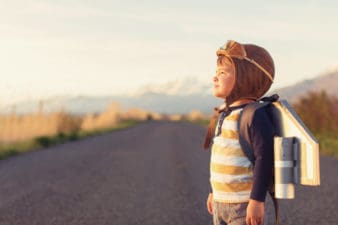The primary goal of retirement planning is to accumulate enough money to lead a comfortable life once your monthly paychecks stop coming.
How much is “enough?”
The magic retirement number will differ based on factors such as your monthly expenditures, how many dependents you have, and where you live.
What is the average RRSP balance at age 64?
According to a Ratehub report, Canadians aged 55-64 have an average of $150,000 in their RRSP.
(A Registered Retirement Savings Plan (RRSP) is a retirement account that helps you reduce your tax bill each year. Contributions to an RRSP — up to a certain amount — are exempt from taxes until the amount is withdrawn from the plan. For instance, an individual earning $100,000 each year can contribute up to $18,000 annually to an RRSP, reducing her taxable income to $82,000.)
TFSA (Tax-Free Savings Account) savings for the same age range average $21,000.
All told, Canadians between the ages of 55 to 64 have an average of $300,000 in total retirement savings.
Is $300,000 enough to retire in Canada?
The Canadian government also has a couple of pension plans, such as the Canada Pension Plan (CPP) and the Old Age Security (OAS), that provide additional income in retirement. The average CPP payout in October 2024 for a 65-year-old starting the payment is $815, while the maximum payout is $1,364.60. Additionally, the maximum monthly OAS payment stands at $718.33.
If someone with the maximum CPP and OAS payouts invests $300,000 in guaranteed income certificates offering a 4% yield, the total annual interest payout would be $12,000. If we combine the two retirement benefits with the GIC investment, the maximum annual income would be around $37,000, which may not be sufficient for most retirees.
How to boost your retirement savings
It’s crucial to build a retirement fund to support your expenses each year. One way to do that is to create a diversified portfolio with exposure to different asset classes such as equities, bonds, and gold (and perhaps even cryptocurrency if you have a high-risk appetite). Portfolio diversification lowers overall risk and helps generate inflation-beating returns over time.
Invest in a low-cost passive index fund
An easy way to diversify is to invest in low-cost passive income funds that track the S&P 500, such as the Vanguard S&P 500 Index ETF (TSX:VSP). Investing in the S&P 500 index should bring double-digit returns over the long term.
For instance, the S&P 500 index has returned more than 10% annually on average in the past six decades if we account for dividend reinvestments. With $3.5 billion in assets under management, the VSP ETF is hedged to the Canadian dollar, shielding investors from fluctuations in exchange rates.
A $10,000 investment in the S&P 500 index 30 years ago would be worth close to $215,000 today, making the VSP ETF a top investment choice right now.
 Don't Miss AI's Third Wave
Don't Miss AI's Third Wave







